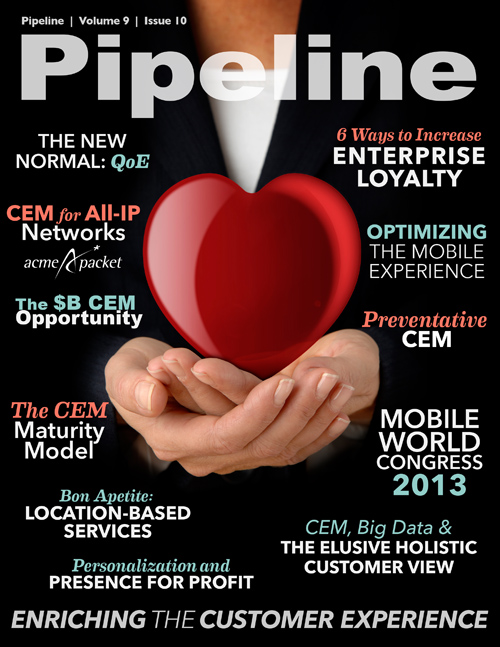Balancing the Mobile Broadband Equation
Roots of a strategy. CEM isn’t new. Apple pioneered it in the ’90s with user-centricity that went beyond the design of its products. Not only did it employ ergonomic experts in developing its Macintosh GUIs (graphic user interfaces), it would videotape new customers opening the packaging of its computers to learn how to simplify the steps required to plug in and boot up.
The company’s focus on users extended to the opening of the first Apple Store in 2001, which has since revolutionized retailing. Today Apple has the largest market capitalization of any company on earth besides Exxon and $140 billion in cash on its balance sheet, indisputable evidence of its embrace of CEM.
CSPs are relatively new to the concept, however, making CEM that much more of a potential competitive differentiator — and an advantage — for early adopters. Many CSPs have taken steps toward embracing CEM by stratifying their bandwidth pricing options, but they can do a great deal more to ensure better network quality and supply more personalized advanced services to users.
Customer insights. A CSP that hopes to implement CEM will need data-driven customer insights drawn from many sources, including network, service and device performance, plus real-time subscriber experience and service use. These insights are vital in learning how to best focus improvements in a CSP’s network and services in order to realize the best return on an enhanced customer experience.
Improved business processes that cover the full array of a CSP’s operations, from network and service-quality assurance to pricing, charging and fulfillment as well as campaign management, customer care and billing, can also be achieved through a well-executed CEM strategy.
With a combination of data-driven customer insights and optimized, CEM-driven business processes that are automated, holistic and personalized, a CSP can scale, almost infinitely, its ability to monitor the customer experience in real time across a range of parameters.
Avoiding hiccups. Should network “hiccups” occur, for example, a CSP can proactively respond before a subscriber suffers a decline in service quality. If the problem is less latent it can be escalated for priority attention, with an easy-to-understand explanation sent to the subscriber. And should the problem persist, the CSP’s customer-care center can be alerted; if the subscriber calls in, it can make accommodations for a refund, a coupon or some other amenity that offsets his or her trouble.
Another scenario, albeit a revenue-producing one, could involve enhanced, on-demand bandwidth provided for real-time and multiparty video conferencing. For heavy users, perhaps businesspeople or medical professionals who frequently need to engage a number of other users via video, a CSP could charge a monthly or per-use premium, which the subscriber would likely be happy to pay.
In a subscriber’s ideal world its CSP quickly resolves service-quality issues regardless of the source. But CEM actually allows a provider to address individual subscribers with a high degree of personalized service, thanks to the subscriber-specific data that informs otherwise generic business processes
Breaking through obstacles. Of course, among the biggest obstacles in implementing CEM-directed business processes are the silos of systems and accountabilities that insulate each of those areas, a situation that calls for business reengineering, the fear of which can stop many CSPs’ aspirations dead in their tracks.
But for providers who are willing to charge ahead and deliver a superior customer experience, CEM doesn’t have to be so daunting. Many of the major telecom vendors have extensive experience and portfolios that can help. NSN, for one, draws its CEM competencies from subscriber data management (SDM) deployments that total more than 2.2 billion subscribers worldwide.
CSPs can also take several approaches to CEM deployments via solutions such as CSP-driven turnkey projects involving a selected vendor or vendors; platforms built by qualified systems integrators that use best-in-class, third-party components; and, undoubtedly the simplest and least capital-intensive, a hosted or cloud-based service.
Do it now. In any case, CSPs need to start developing their CEM strategies now. The sooner they’re put into practice, the sooner revenues and costs can be rebalanced. If a CSP waits it will fall behind, because CEM will no longer be a competitive advantage — it’ll be a competitive imperative a provider needs just to stay in the game.



















